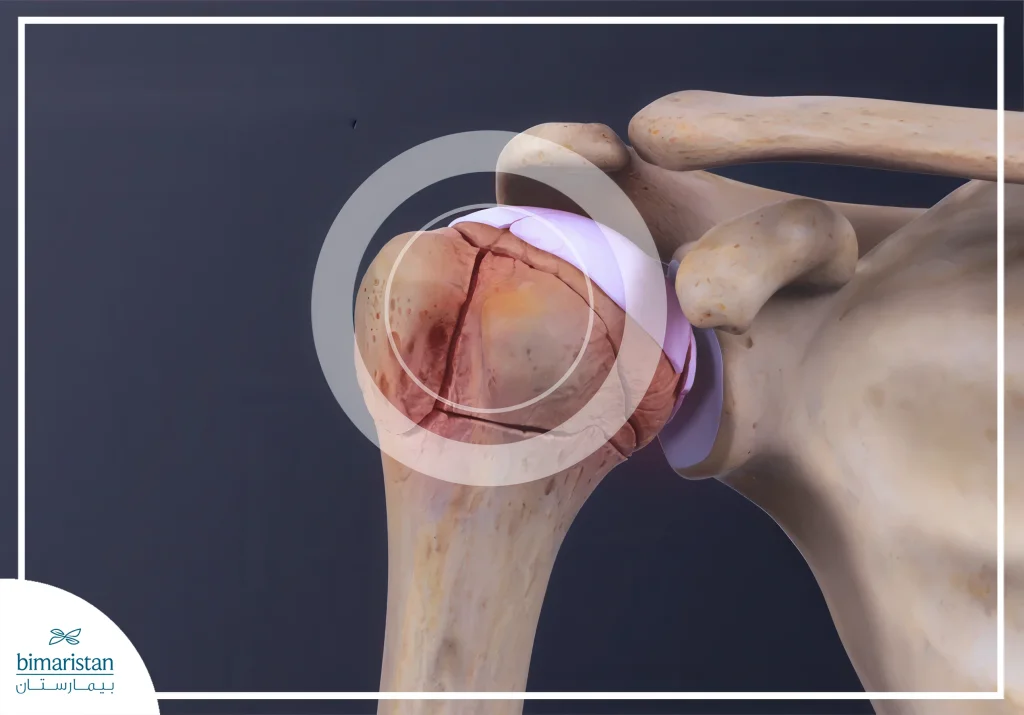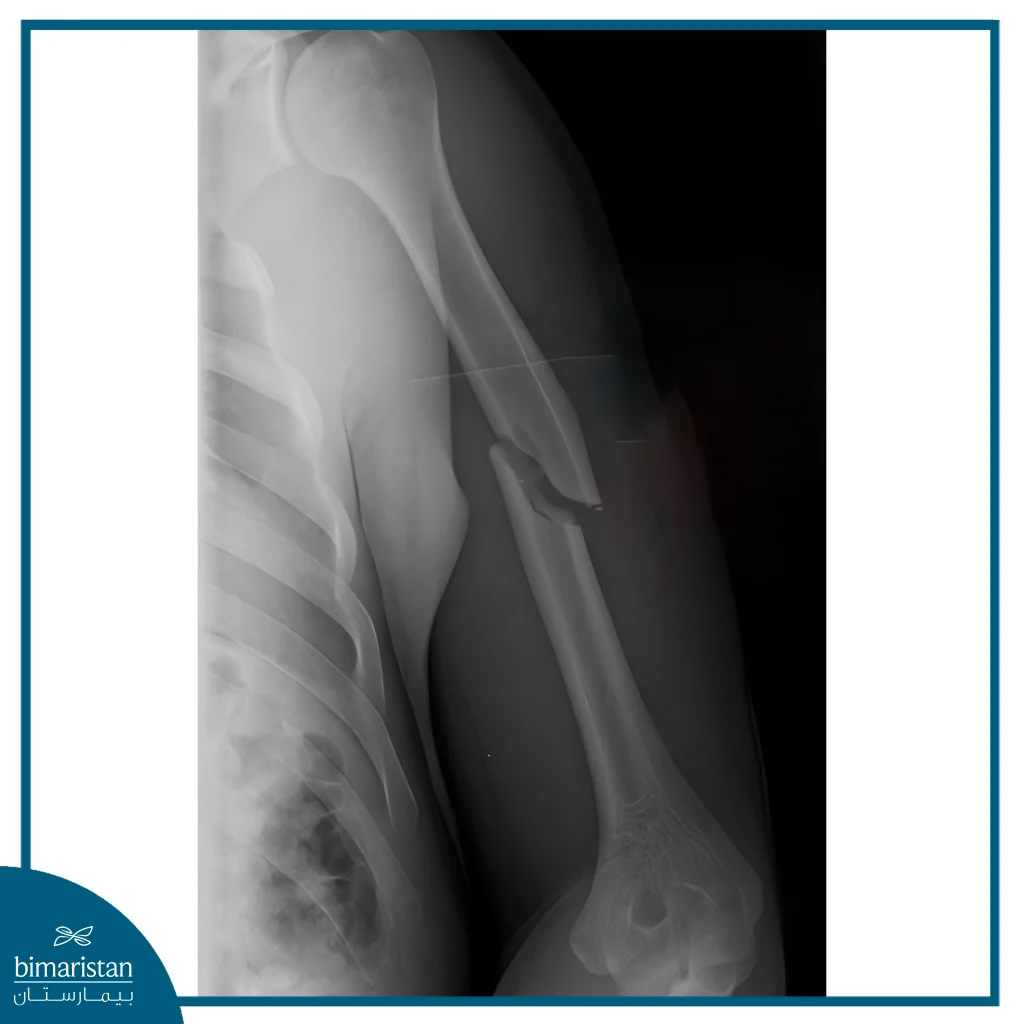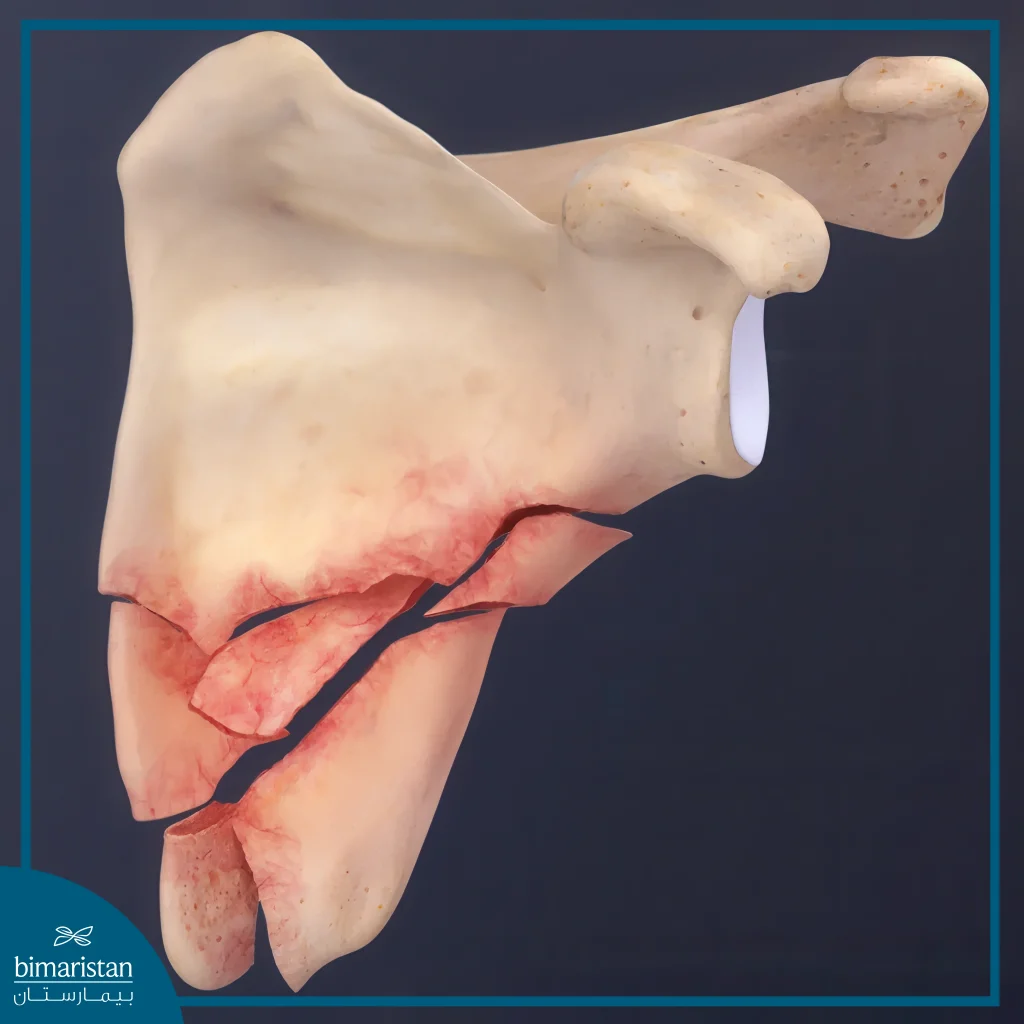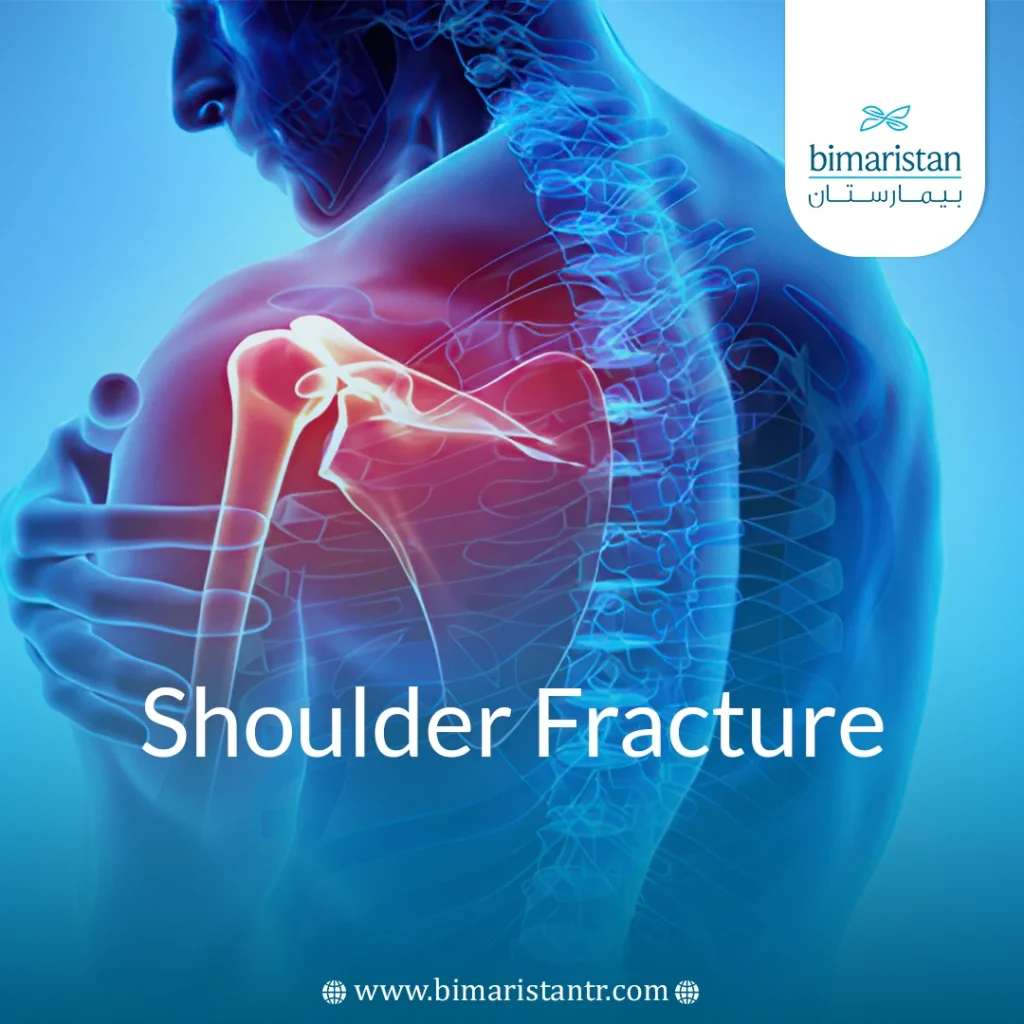Shoulder fractures are classified into various types and degrees based on the severity of the fracture in the joint bones. Typically, the symptoms of a shoulder joint fracture are clear. When you have a fracture in your shoulder, you will experience severe pain along with swelling in the shoulder.
The shoulder joint is formed by the meeting of the humerus bone in the arm with the scapula bone. Additionally, the clavicle bone, which connects the shoulder blade with the upper part of the shoulder, is added to them. Fractures can occur in any of these bones or in all of them simultaneously, and shoulder fractures may be accompanied by dislocation of the joint bones.
Although shoulder fractures are rare in the human body (because the joint is sturdy and well-protected), this fracture requires medical intervention to prevent complications resulting from delayed treatment. This is especially true for severe bone injuries that occur in one of the shoulders and are accompanied by dislocation or injury to the surrounding structures, such as blood vessels or nerves. Continue reading to learn everything you need to know about a fractured shoulder and its symptoms, along with how to treat it properly.
Overview of shoulder fracture
Shoulder fractures account for only 1% of all bone fractures, making them relatively rare. This is because the shoulder joint is surrounded by many muscles in the upper limb that provide the necessary protection for the bones, in addition to the well-protected location of the joint from all directions.
Applying tremendous force to the bones is required for a fracture to occur in the shoulder bones. One of the most common causes of shoulder fractures is motor vehicle accidents and motorcycle accidents, in addition to falls from great heights onto the shoulder joint or arm area. Sports injuries may also cause fractures, although they are less common. Therefore, shoulder fractures are often seen in young males because they are more prone to injuries and accidents than older individuals. However, on the other hand, bone density decreases with age, and bones become weaker. A minor impact can lead to a fracture in the shoulder bones in older individuals.
The methods used to treat a shoulder fracture vary depending on the severity of the bone injury and the extent of the joint damage. The doctor may suffice with simple treatments such as immobilizing the joint with a splint until the fracture heals on its own. For severe fractures, alternative treatment methods may be employed, such as surgical procedures designed to correct the faulty bone alignment. Therefore, fractures are categorized into various types and forms to determine the most effective approach for management and treatment.
As for the symptoms of a fractured shoulder, they are not significantly different from those of other bone fractures, and they are usually characteristic of the fracture. There is no need to fear the possibility of a hidden fracture in your shoulder without feeling it, because the fracture tends to show clear signs and symptoms.
Shoulder fracture symptoms
As mentioned earlier, the symptoms of a shoulder fracture are not deceptive and often appear directly after the injury. However, there are some cases where the symptoms may be delayed and may not appear until up to two days after the incident that caused the fracture. When a patient experiences a fracture, they typically feel one of these signs and symptoms:
- Pain in the shoulder that worsens with movement
- Swelling around the site of the fracture in the shoulder
- Difficulty moving the shoulder joint or lifting the arm upward
- Hearing a bone-cracking sound
- Deformity of the external appearance of the shoulder joint, especially in severe fractures
- Bluish discoloration or changes in the color of the skin above the shoulder fracture area
If you notice any of these signs after sustaining a traumatic injury, such as falling on your arm in an extended position, consult your doctor to investigate the causes of these symptoms and diagnose the medical problem that led to them, which may include shoulder fractures as one of its leading causes.
Types of shoulder fractures
Bone fractures have been divided into many shapes and types based on the type of bones affected within the shoulder joint. This classification aids in selecting the most suitable method for treating the fracture.
Clavicle fracture
The clavicle is a long bone that connects the upper part of the scapula with the shoulder blade. It is prone to injuries and fractures, with a clavicle fracture being one of the most common types of shoulder joint fractures.
Clavicle fractures are common in children and young adults, often occurring after a traumatic or sports injury such as falling while playing football. They can also occur due to a motor vehicle accident that results in a severe collision.

Humerus fracture in the arm
The humerus bone connects with the scapula bone, forming the shoulder joint, which has a ball-and-socket shape. The ball is the head of the humerus, and the socket is located within the shoulder blade.
The humerus bone may fracture in one of its distal or proximal parts due to a severe traumatic injury that affects the continuity of the bone tissue in that area. Fractures in the proximal part of the humerus are more common in older adults and individuals with osteoporosis.

Scapula Fracture
The scapula is a large, flat bone that has a triangular shape. Its hollow (glenoid cavity) connects with the head of the humerus bone, contributing to the formation of the joint between the arm and the shoulder. In its posterior section, it connects with the clavicle bone, forming a joint between the shoulder and the chest.
This type of fracture is rare because numerous structures surrounding the scapula protect it from injury, making fractures in that area less common.

Shoulder fracture shapes
A morphological classification has been developed for all bone fractures to determine the severity of the injury and the best treatment method. These shapes include:
Stable shoulder fracture
When the broken bone fragments remain in their normal position within the joint without displacement, the fracture is known as a stable fracture. This means the fracture is not accompanied by dislocation or displacement of the bones from their normal anatomical position. This type has a better prognosis and is easier to treat than unstable shoulder fractures.
Unstable Shoulder Fracture
In this type, the broken bone is displaced from its normal position in the joint, causing the connected ends of the bones to separate and the bones of the shoulder joint to become misaligned.
This type may require surgery to realign the bones to their original position in the joint, allowing the fracture to heal normally. Furthermore, surgery aims to correct shoulder instability, which, if left untreated, can lead to recurrence of fractures or dislocations in the future. You can read more about shoulder dislocation surgery.
Shoulder Fracture Diagnosis
The orthopedist will ask you about any recent injuries or sports activities that could have caused a shoulder fracture, as well as a history of shoulder fractures or dislocations. He will then ask about your symptoms in detail.
The orthopedist will then conduct a general physical examination and may ask you to perform certain movements, such as raising your arm upwards. To confirm the diagnosis, he will order one of the following tests:
X-ray
This test provides a clear view of the bones, allowing for the identification of a fracture or abnormality in the shoulder joint, even if it is very small. It also allows the type and severity of the fracture to be determined.
MRI
This is an advanced medical procedure that enables doctors to clearly visualize the internal tissues of the body using a strong magnetic field and radio waves. This test is useful for accurately diagnosing joint and bone diseases and ruling out potential causes of symptoms, such as shoulder tendonitis.
How to treat a shoulder fracture
Choosing the best treatment method depends on the nature of the condition and the severity of the fracture. Currently, several methods are available to treat a shoulder fracture, ensuring the bones heal properly without complications that affect the joint’s function and condition.
Non-surgical shoulder fracture treatment
In cases of simple shoulder fractures not accompanied by bone displacement, a splint with a shoulder brace can be used to stabilize the joint and prevent movement until the fracture heals on its own. Applying ice to the fracture site helps relieve symptoms, as does the use of oral pain relievers such as ibuprofen.
We must not forget the important role of physical therapy in restoring range of motion and accelerating fracture healing and recovery. You can read more about physical therapy in Turkey.
Shoulder fracture surgery
In cases of severe shoulder fractures involving bone displacement and damage to adjacent structures, such as tendon or ligament damage, surgery is necessary to ensure proper bone healing and repair the accompanying damage, thereby preventing serious joint complications.
Shoulder fractures can lead to morphological or functional deformities of the joint, especially those resulting from severe crushing injuries, such as a traffic accident, which can cause serious damage to the shoulder joint.
Shoulder fracture surgery is performed either arthroscopically or through open surgery. Shoulder arthroscopy is often the preferred option because it is less invasive, requires no large incision, and allows the patient to return home quickly after the procedure. However, in complex injuries, traditional surgery may be preferred due to the difficulty of repairing severe joint damage with arthroscopy.
The surgeon may simply remove the broken bone fragments, debride, and smooth the bony edges. In other cases, a bone graft may be required when extensive bone loss has occurred. Dislocations associated with a shoulder fracture, if present, are also repaired, and joint instability is treated by restoring the joint and its components to their normal state.
Recovery after shoulder fractures
The period following a shoulder fracture is a delicate one. Patients must adhere to their doctor’s instructions regarding rest and avoiding physical activities that require movement of the arm and shoulder to ensure rapid bone healing.
Eating a healthy diet and avoiding smoking are important tips for accelerating bone healing. Vitamin D can also speed up healing, which can be obtained through exposure to sunlight or through vitamin supplements.
The recovery period after shoulder fractures typically ranges from 6 to 12 weeks. The duration of this period may vary depending on the severity of the fracture, the patient’s condition, and their adherence to the recovery plan prescribed by their doctor. Physical therapy exercises also play a role in accelerating fracture healing and improving joint range of motion and function.
A new technique known as accelerated bone healing through electrical stimulation has recently been implemented in Turkey. This modern method helps speed up the patient’s return to everyday life by ensuring faster bone healing.
Ultimately, a shoulder fracture may be somewhat rare, but it requires special attention and care to prevent complications that could affect the joint’s function and stability. Shoulder fractures typically present with symptoms and signs that facilitate a prompt diagnosis. Shoulder fractures may be accompanied by dislocation or separation of the humerus from the shoulder blade. A fracture of the clavicle is the most common type of fracture that occurs in the shoulder joint.
Sources:



